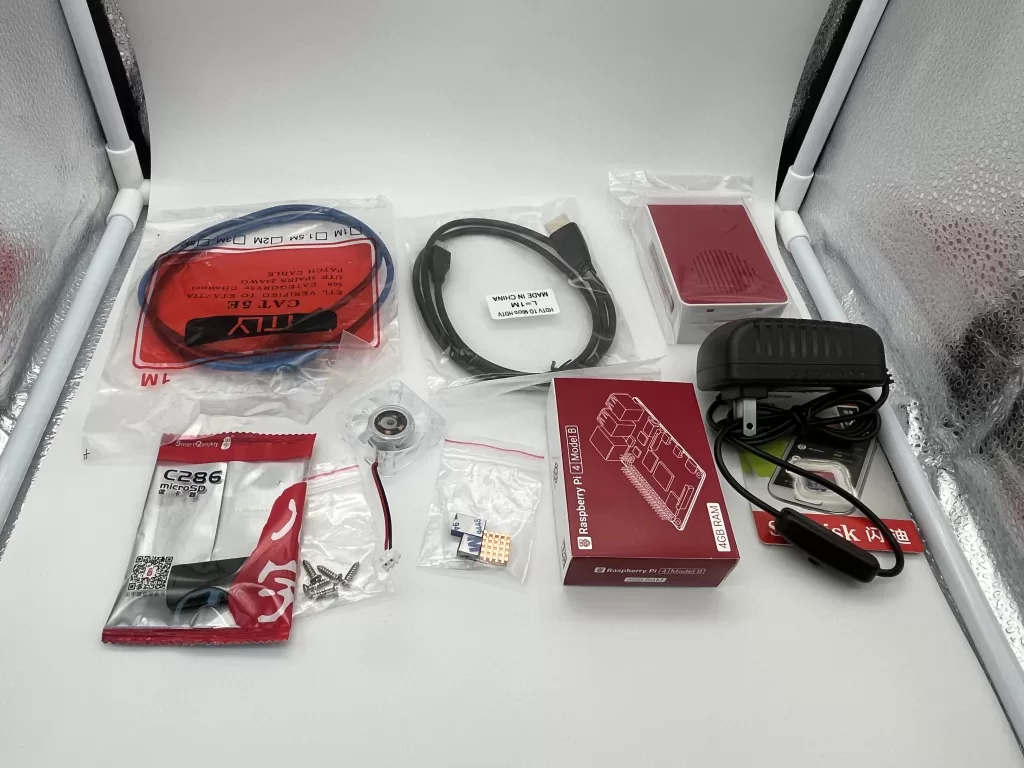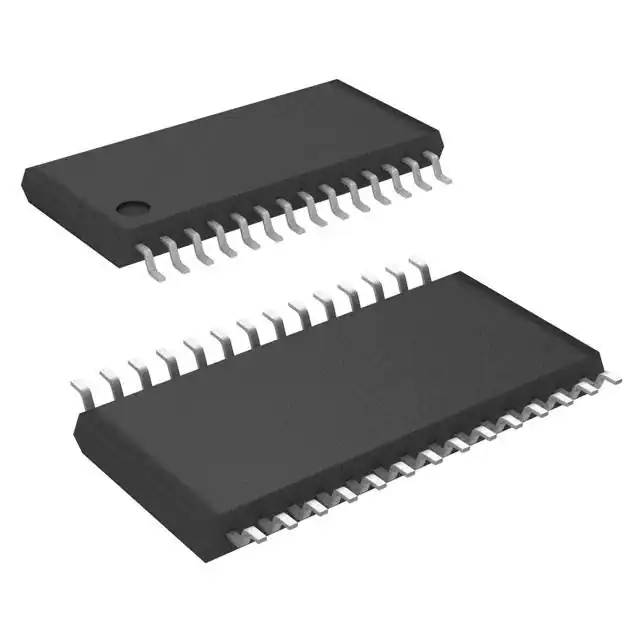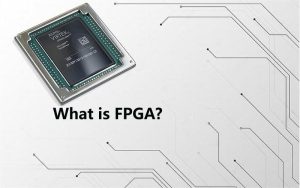This blog will cover the fundamental concepts of optoisolators to help you gain a better understanding of their importance.
View detailsHow DRAM Works?
In this blog, we will uncover the benefits that make DRAM the top choice for quick and effective data storage, while also acknowledging its limitations. Explore the captivating realm of DRAM and its vital role in contemporary computing together.
What Is Dynamic Random Access Memory?

Figure 1 DRAM
DRAM stands for Dynamic Random Access Memory. It is a type of computer memory that is commonly used in personal computers, servers, and other electronic devices. DRAM is a risky memory, which means that it calls for a steady electricity delivery to preserve data.
Key Features of Dynamic Random Access Memory
Volatility: As mentioned earlier, DRAM is volatile, which means that when power is removed, the data stored in DRAM is lost. This is in contrast to non-volatile memory like hard drives or solid-state drives (SSDs), which retain data even when power is turned off.
Random Access: DRAM allows for random access to data, meaning that any piece of data can be accessed directly, regardless of its location in memory. This makes it suitable for storing and retrieving data quickly.
Storage Cells: DRAM stores data in individual memory cells, each consisting of a capacitor and a transistor. The capacitor holds the electrical charge that represents the data, and the transistor controls access to that data.
Refresh Operation: DRAM requires periodic refresh operations to maintain the stored data. Due to the nature of the capacitors used in DRAM, they tend to leak charge over time, leading to data loss. The refresh operation involves reading and then immediately rewriting the data back into the memory, effectively restoring the charge in the capacitors.
Higher Density: DRAM offers higher memory density compared to other types of memory like static random access memory (SRAM). This means that more data can be stored in a given physical space, making it suitable for applications that require large amounts of memory.
Speed: DRAM provides faster access times compared to non-volatile memory like hard drives. However, it is slower than SRAM, which is faster but less dense.
Cost: DRAM is generally less expensive compared to SRAM and non-volatile memory technologies like NAND flash memory. However, the cost of DRAM can vary based on factors such as capacity and speed.
Basic Unit
The basic unit of storage in DRAM is the memory cell. A memory cell in DRAM consists of a capacitor and a transistor.

Figure 2 Basic Unit of DRAM
The capacitor is responsible for storing the electrical charge that represents the data. It can hold a charge or be discharged to represent binary values, typically '1' or '0'. The presence of charge in the capacitor signifies a '1', and the absence of charge represents a '0'.
The transistor acts as a switch that controls access to the data stored in the capacitor. It is used to read or write data to the memory cell. When the transistor is turned on, the data in the capacitor can be accessed or modified. When the transistor is turned off, the data remains stored in the capacitor.
Multiple memory cells are organized into arrays or grids. These arrays are further organized into rows and columns. The intersection of a row and a column represents an individual memory cell.
To access a specific memory cell, the memory controller provides the address of the desired cell, which includes both the row and column information. The memory controller activates the corresponding row by sending the row address and then sends the column address to access the memory cell within that row.
By manipulating the charges in the capacitors of individual memory cells, DRAM can store and retrieve data at a fast rate, making it suitable for applications that require frequent and random access to data.
How Does Dynamic Random Access Memory Work?

Figure 3 DRAM
Dynamic Random Access Memory (DRAM) works by storing data as electrical charges in capacitors within memory cells.
Memory Cells: DRAM consists of a large number of memory cells, organized in a grid-like structure. Each memory cell contains a capacitor and a transistor.
Capacitor Charging: To store data in a memory cell, the capacitor is charged or discharged to represent the desired data value. Charging the capacitor represents a binary '1' while discharging it represents a '0'. The charge in the capacitor is stored as an electrical potential.
Row and Column Access: DRAM cells are arranged in rows and columns. To access a specific cell, the memory controller activates the row containing the desired cell by sending a row address. This activates the transistor connected to that row, allowing access to the memory cells in that row.
Sense Amplifiers: Once the row is activated, the memory controller sends a column address to select the specific memory cell within the activated row. The charge in the capacitor is read by sense amplifiers, which amplify the weak signal from the capacitor to a stronger level for further processing.
Data Reading/Writing: When reading data, the amplified signal is interpreted as a '1' or '0' by the memory controller. The data is then transferred to the processor or other parts of the system. When writing data, the memory controller adjusts the charge in the capacitor based on the desired value.
Refreshing: DRAM cells have a characteristic called "leakage," where the charge stored in the capacitors slowly dissipates over time. To counteract this, DRAM requires periodic refreshing to maintain data integrity. During a refresh operation, the memory controller reads the data from each memory cell and immediately rewrites it back, effectively restoring the charge in the capacitors.
DRAM is a type of memory that is not able to retain data without a continuous power supply. If power is lost, the charge in the capacitors dissipates, and the data is lost. To ensure data persistence, DRAM is often used in conjunction with non-volatile memory, such as solid-state drives (SSDs) or hard drives, for long-term storage.
How Is Dynamic Random Access Memory Plugged Into A Motherboard?

Figure 4 Motherboard
Dynamic Random Access Memory (DRAM) modules are physically connected to a motherboard using memory slots or sockets. The specific type of memory slot used depends on the motherboard and the generation of DRAM being used. The most common memory slot types for consumer motherboards are DIMM (Dual Inline Memory Module) slots. Here's how DRAM is typically plugged into a motherboard:
Identify the Memory Slots: Locate the memory slots on the motherboard. These slots are typically situated near the CPU socket and are easily recognizable due to their long, rectangular shape with notches on the bottom edge.
Orient the DRAM Module: Ensure that the DRAM module is correctly oriented. DRAM modules have a notch along the bottom edge that aligns with a key in the memory slot. This ensures that the module is inserted in the correct direction.
Open the Retention Clips: Most DIMM slots have retention clips on each end. These clips help secure the DRAM module in place. Gently push down on the clips to release them. They will open up or move slightly away from the center of the slot.
Align and Insert the DRAM Module: Align the notch on the bottom edge of the DRAM module with the key in the memory slot. Carefully insert the module into the slot at a slight angle, making sure the gold contacts on the module are fully inserted into the slot.
Apply Firm and Even Pressure: Once the DRAM module is aligned with the slot, apply firm and even pressure on both ends of the module. The retention clips should automatically close and secure the module in place. You may hear a clicking sound when the clips engage.
Verify Proper Installation: Check that the DRAM module is fully seated in the slot by ensuring that the retention clips are securely closed. The module should be level and not protruding from the slot. The gold contacts on the module should be completely inserted into the slot and not visibly exposed.
Repeat for Additional Modules: If you have multiple DRAM modules to install, repeat the above steps for each module, ensuring they are inserted into separate memory slots if available.
DRAM VS SRAM
DRAM (Dynamic Random Access Memory) and SRAM (Static Random Access Memory) are two different types of computer memory with distinct characteristics.
| Feature | DRAM | SRAM |
| Construction | Consists of a capacitor and a transistor per memory cell | Composed of multiple transistors per memory cell |
| Storage Density | Higher storage density due to simpler cell structure | Lower storage density due to flip-flop cell structure |
| Access Speed | Slower access times due to the need for refreshing | Faster access times, no need for refreshing |
| Power Consumption | Lower power consumption as it only requires power during operations and refresh cycles | Higher power consumption as it requires constant power to maintain data |
| Cost | More cost-effective due to higher production volumes and simpler structure | Relatively more expensive due to lower production volumes and complex structure |
| Volatility | Volatile memory requires a constant power supply to retain data | Volatile memory requires a constant power supply to retain data |
| Usage | Main memory in computers, smartphones, and other devices | Cache memory in CPUs, register files, and small on-chip memories |
| Latency | Higher latency due to the need for refreshing and longer access times | Lower latency due to faster access times and no need for refreshing |
| Bit Stability | Less stable, as stored charges gradually leak over time and require refreshing | More stable, as flip-flop circuits can hold data without degradation |
| Bit Cell Size | Smaller bit cell size, allowing for higher memory density | Larger bit cell size, resulting in lower memory density |
| Refreshing | Requires periodic refreshing to maintain data integrity | Does not require refreshing to maintain data integrity |
Advantages and Disadvantages of DRAM
Advantages of DRAM
Some of the key benefits of DRAM are as follows:
High Density: DRAM provides high storage density, allowing for larger memory capacities in a relatively small physical footprint. This makes it suitable for applications that require a large amount of memory, such as modern operating systems, data-intensive applications, and multi-tasking environments.
Cost-Effective: DRAM is generally more cost-effective compared to other memory technologies like Static Random Access Memory (SRAM). The manufacturing process for DRAM is simpler, leading to higher production volumes and lower per-unit costs. This affordability makes DRAM a practical choice for mainstream consumer electronics and computing devices.
Fast Access Speeds: Although DRAM has slower access times compared to SRAM, it still offers fast read and write operations. The access speed of DRAM allows for efficient data retrieval and storage, making it suitable for a wide range of applications where quick access to data is crucial.
Random Access: DRAM provides random access capabilities, meaning that any memory cell can be accessed directly without the need to traverse through other cells. This random access property allows for efficient and flexible memory access patterns, enabling quick data retrieval from different memory locations.
Scalability: DRAM technology has advanced significantly over the years, allowing for continuous increases in memory capacities and performance. As the demand for larger memory sizes grows, DRAM manufacturers have been able to develop higher-density modules, meeting the evolving needs of various applications.
Compatibility: DRAM is compatible with a wide range of computer architectures, including desktops, laptops, servers, and mobile devices. It is widely supported by operating systems and software applications, making it a versatile memory solution for various computing environments.
Energy Efficiency: DRAM generally consumes less power compared to other memory technologies like SRAM. It only requires power during read, write, and refresh operations, resulting in lower overall power consumption. This energy efficiency is beneficial for portable devices with limited battery capacity.
Disadvantages of DRAM
The main disadvantages of DRAM include the following:
Volatility: DRAM is a volatile memory, meaning that it requires a constant power supply to retain data. If power is lost or interrupted, the data stored in DRAM is lost. This characteristic necessitates the use of backup or non-volatile storage solutions, such as hard drives or solid-state drives, to preserve data in case of power failure.
Refreshing Requirement: DRAM cells store data as electrical charges in capacitors. However, over time, these charges gradually leak away, leading to data degradation. To combat this, DRAM requires periodic refreshing, where the memory controller reads and rewrites the data to maintain its integrity. The refreshing process consumes additional system resources and can result in reduced overall memory performance.
Slower Access Speeds: Compared to other memory technologies like Static Random Access Memory (SRAM), DRAM has slower access times. This is primarily due to the need for refreshing and the additional time required to read and rewrite data. While DRAM still provides fast access speeds in absolute terms, the relative speed is slower compared to SRAM.
Limited Lifespan: DRAM has a limited lifespan in terms of the number of read and write cycles it can endure. Each memory cell can only sustain a certain number of read-and-write operations before it starts to degrade or fail. This limitation can be mitigated by wear-leveling techniques and error correction mechanisms, but it remains a factor to consider for systems with heavy memory usage or constant data modification.
Lower Stability: DRAM cells store data as electrical charges, which are susceptible to various external factors, such as electrical noise and temperature fluctuations. These factors can lead to data corruption or loss if proper error correction mechanisms are not in place. Additionally, the stored charges in DRAM cells can be affected by neighboring cells, causing potential interference or bit flips.
Higher Power Consumption: While DRAM generally consumes less power compared to some other memory technologies like SRAM, it still requires power for refreshing operations and maintaining the stored data. This ongoing power consumption contributes to the overall energy usage of a system and can impact battery life in mobile devices.
Lower Bit Cell Stability: DRAM's capacitor-based storage cells are more susceptible to noise and electrical disturbances. As a result, the stored charges in DRAM cells are less stable compared to other memory technologies like SRAM. This can lead to occasional errors or data corruption if not properly managed.
Conclusion
In conclusion, DRAM (Dynamic Random Access Memory) operates by utilizing capacitors to store binary data as electrical charges. The capacitors gradually lose their charge over time, requiring constant refreshing to maintain the stored information. DRAM provides fast access times, high density, and affordability, making it the preferred choice for volatile memory in computer systems. However, its volatility and relatively higher power consumption are limitations that necessitate the use of non-volatile memory for long-term storage. Despite these limitations, DRAM continues to advance, driving improvements in-memory technology and playing a crucial role in modern computing systems.
Becky
Becky is a technical writer who are interested in writing some professional and original articles. She spent some time working in some electronic sector, but her main area of interest is the use of AI in edge computing. The rest of the time, she write or program about technology-related articles pertaining to the Internet of Things, GPU computing, LoraWAN, PCB, Machine Learning, Precision Agriculture, Open Electronics, and similar areas.
WEW ALL POSTS BYBecky-
What are Optoisolators? 249
-
Unveiling A/C Compressor Connectors: A Comprehensive Guide 278
Connectors for air conditioning compressors are essential to the operation of air conditioning systems. Maintaining optimal performance requires kn...
View details -
How to Test a Capacitor With a Multimeter? 291
In many electronic devices, including air conditioners, amplifiers, and automobile audio systems, capacitors play a crucial role. A multimeter test...
View details -
FPGA basics: Applications, Structures, and Components 523
This article is going to talk about the evolution of FPGA, and structures, components, programming technologies, and applications related to FPGA.
View details -
A/V Cables: The Bridge Between Audio and Video Devices 303
In this blog, we will delve into the world of A/V cables, exploring their types, uses, and relevance in the modern era.
View details -
Oscillators VS Clock Generators: Battle of the Frequencies 129
In this blog, we will dive into the intricacies of oscillators and clock generators, exploring their functionalities, differences, and applications...
View details
 Ampheo Electronics
Ampheo Electronics






